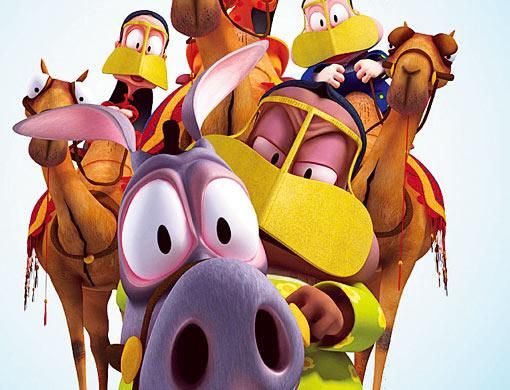More than 30 students from Zayed University volunteered for a year to help bring, the Middle East's first 3D animation series, to life. Reema Saffarini finds out how they did it
They are four UAE national women whom you can't help but fall for when you first see them. Despite their contradicting personalities, they are fun to watch, especially the various forms their friendship takes everyday.
Where can you meet them? Watch Freej, a 3D animation series being telecast every day during Ramadan on Sama Dubai.
The series tells the story of these four women -Um Saeed, Um Saloum, Um Allawi and Um Khammas - who live in a secluded neighbourhood in modern Dubai.
The programme, which was a mere idea eight years ago, required a lot of work and research before it became reality. More than 30 students from Zayed University worked for a year behind the scenes to help the cartoon's creator Mohammad Harib bring this project to life.
"Harib was looking for volunteers to help him work on this project. He came to the university and gave a presentation on what he needs and what the show was about," said Aisha Ahli, international studies senior.
Volunteers
"Students gave in their resumes and accordingly were chosen to take part in the project. We had four project heads who received the assignments from Harib and then assigned them to the students to work on," said Aisha, one of the project heads.
Students had to work on three main tasks: take pictures of modern buildings and traditional houses in Dubai, research UAE proverbs and old traditional sayings and bring in old songs and hymns that were popular with UAE nationals in the past.
"They needed the pictures to work on the cartoon drawings, and the songs and old sayings to incorporate in the dialogue. It was very interesting," she said.
Task one
Latifah Al Shamsi was one of the very active students who worked on the project. "Every now and then we would get an email about the assignment we were supposed to carry out.
"We went to many sites in Dubai to take pictures of buildings such as the Burj Al Arab, the Emirates Towers, etc," said the social behaviour and communication and media student.
"We also went to many traditional sites in the city to take pictures of old houses, door designs and old instruments and tools people of the UAE used to use in the past."
Hessa Al Muhairi, public relations junior, said that she found good picture opportunities in the Al Qaraisah area of Jumeirah.
"It used to be a majlis for heads of tribes in the past and now it has turned into a museum. We took pictures of everything including traditional Arab coffee pots (Dallah) and the Barajil, an old cooling system built in houses," she said.
Hessa added that the task provided her with a wealth of knowledge about the UAE's heritage.
Task two
Looking up old proverbs was a harder mission for the students. Latifah was lucky to find an old book of sayings in her father's library, which she used to gather information.
"It was really hard to find these old proverbs. We all went around asking our parents and grandparents for help. Some of us, of course, came up with the same information, but it was a lot of work," she said.
As difficult as this task was, Aisha found it an interesting one to work with.
"The four characters in the cartoon have Arabic, Bedouin and Persian origins. It was interesting to research how these characters talked and the old sayings they used. It also illustrated a mesh of cultures and understanding," she said.
Task three
Finding old songs was an easier job for Latifah. "Many people still listen to old songs. I found this in my family so I just asked around," she said.
Hessa found the task very educational as she learned about things she never knew about before.
"It was hard and fun at the same time. Whether we are talking about songs or traditional sayings, there were things I never knew before or words I never understood but learned now," she said.
A secret
Despite the challenges the students faced while working on this project, keeping it a secret was the hardest.
"We were supposed to keep the whole issue confidential and not tell anyone. I was once at my aunt's house and I wanted to take a picture of some the traditional ornaments she has.
"The camera flash attracted almost everyone in the house and I had to come up with a story for why I was doing that," said Hessa.
Now that the show is on the air, all student participants sit every night to watch it.
"Watching the show every day makes me realise how dreams can come true with hard work," said Mariam Al Sayegh, interior design sophomore.
"Harib had a dream on paper and he was able to overcome so many challenges. This is one lesson I learned from working on this project."
What is Freej?
- It is the Middle East's first 3D animated series.
- It was created and directed by Mohammed Harib.
- The first episode of Freej premiered on Dubai TV and Sama Dubai on the first day of Ramadan.
- The first season of Freej will be rerun in the latter half of Ramadan.
- It started off as a six-page study book in 1998.
- It materialised in 2003 when it was adopted by Dubai Media City.
- A small demo was created to test the concept and shortly after it was given the official go ahead by the Shaikh Mohammed Establishment for Young Business Leaders (SME) who took up the initial funding of the project.
For more information, log on to: www.freej.ae



